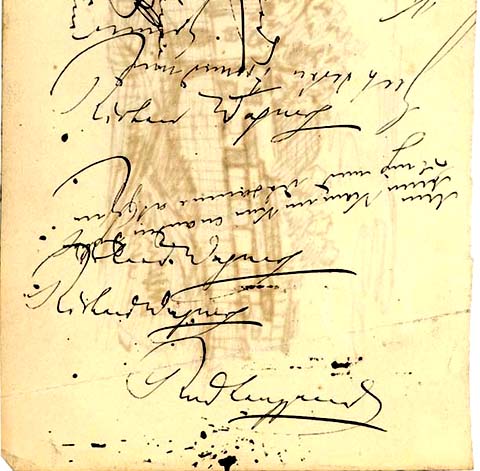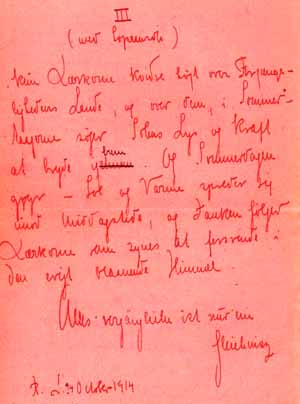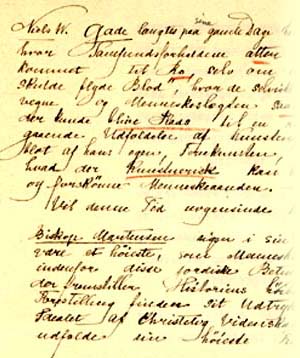A Biographical Multimedia Mosaic...
Handwriting ...
More than anything else, Rued Langgaard's handwriting reveals that he was an incredibly composite and complicated personality.
The fact is that Langgaard's handwriting changed over the years as much as his music did. At several points in his life there was a marked shift, almost from one day to the next, but the greatest changes took place in the middle of the 1920's, which was a period of crisis for him as an artist.
Below are three examples of his handwriting, from about 1911, 1914 and 1928:
About 1911, the young Langgaard attempted on a scrap of paper (enlarged here) to copy Wagner's signature, attempting to write his own in the same manner. For a time, Langgaard tried to make his writing as much like Wagner's as possible - precisely at a time when he was much taken up by Wagner's music.
Example of handwriting from 1914. Page of a programme note on Symphony No. 2 referring to the 3rd Movement (the 2nd Movement of the final version)
The note shown above (section) from 1928 concerns his father's monographs on the philosophy of music. It refers, amongst other things, to Niels W. Gade, and it is worth noting that in these years Langgaard's handwriting was very reminiscent of Gade's, precisely at a time when he regarded Gade as one of his greatest models.
See a further three examples of handwriting from 1909, 1912 and 1937


